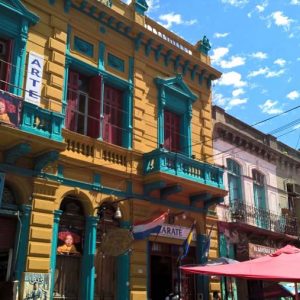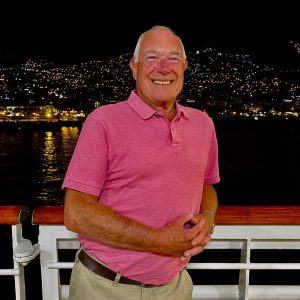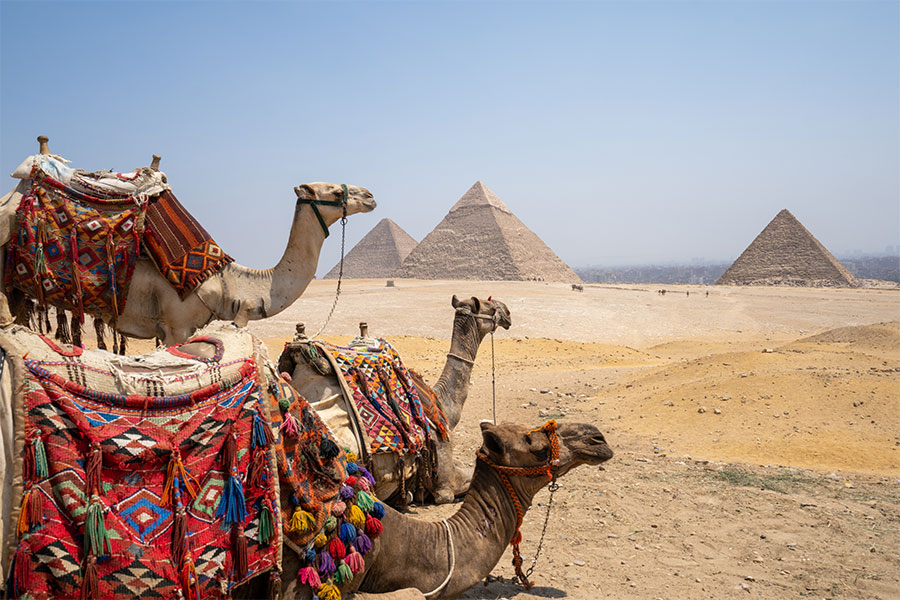
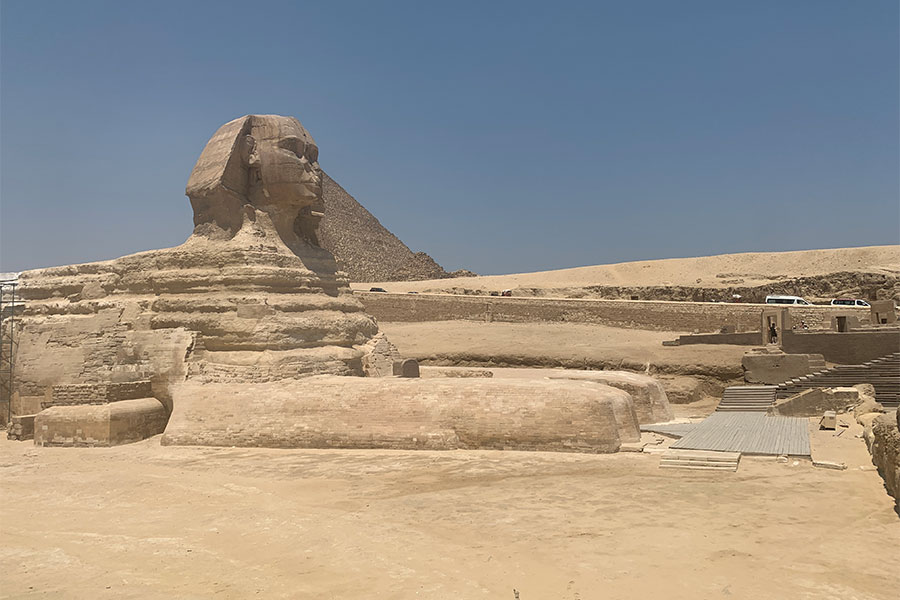
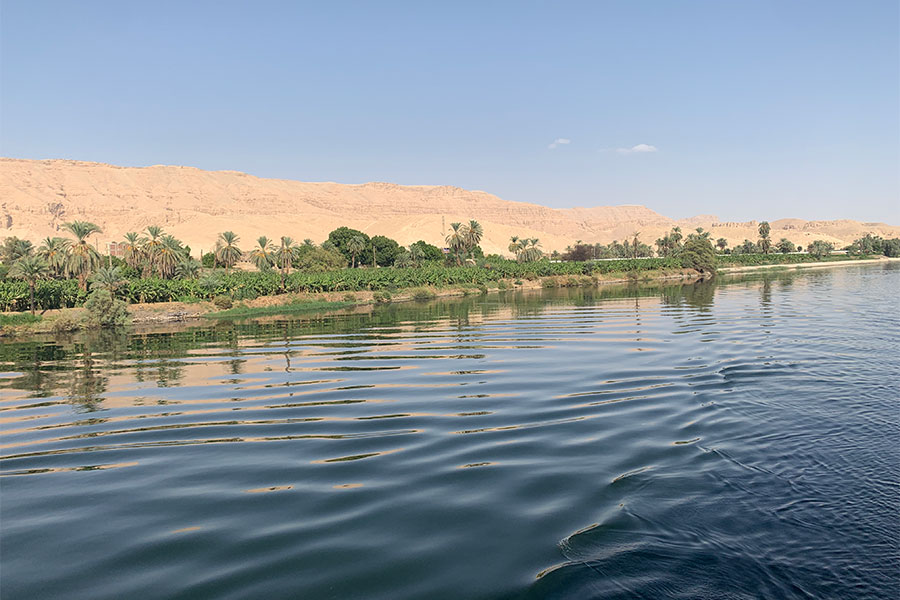
It’s strange how things work out. I have never forgotten the excitement of being taken to see the Treasures of Tutankhamen exhibition at the British Museum in 1972, which marked the 50th anniversary of the discovery of Tutankhamen’s tomb.
Those 50 glistening objects, including the golden mask, were the most valuable display of Tutankhamun riches ever to leave Egypt.
It was London’s first museum blockbuster where, alongside school lessons, I learned of the young king who was buried with his treasures for 3,500 years until, on November 26, 1922, archaeologist Howard Carter opened the entrance to his tomb.
As Carter peered inside the burial chamber, his benefactor the 5th Earl of Carnarvon had asked: “Can you see anything?” Carter answered: “Yes, wonderful things.”
Tragically, Carnarvon died within six months of the discovery and it took Carter more than 10 years to recover all 5,000 objects.
Now, 50 years on, and I am travelling on new ship Viking Osiris’s ‘Pyramids and Pharaohs’ cruise along the Nile to visit the Pyramids of Giza and Tutankhamun’s tomb in the Valley of the Kings.

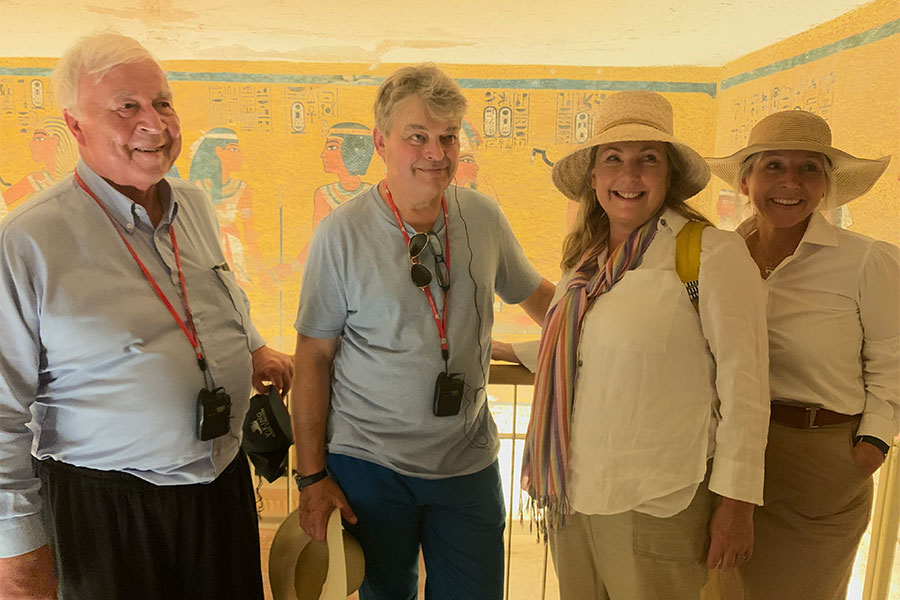
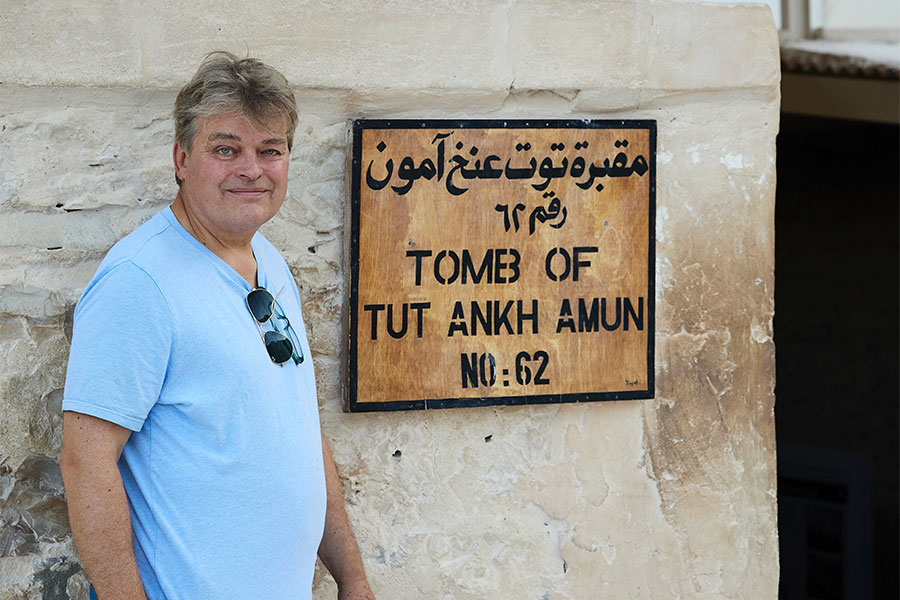
The 8th Earl of Carnarvon, George Herbert, is on board with his wife Lady Carnarvon, and he is making history by being the first godfather of a Viking ship. It’s usually a woman doing the honours but as the great-grandson of the 5th Earl, my view is there can’t be anyone more suited to naming a ship in this centenary year.
Our first stop is the Pyramids and as they appear on the horizon I am spellbound, a group of three just as I had drawn in my history book.
There are not many tourists, so I stand close and touch the giant limestone blocks of the Great Pyramid that rise to 450 feet. My guide tells me 5.5 million tonnes of limestone and 8,000 tonnes of granite were used in their construction. It is hard to get your head around.
The new Grand Egyptian Museum, which overlooks the Pyramids, is due to open in November but until then Tutankhamen’s golden mask, jewellery and sarcophagi remain housed in the Egyptian Museum, in Cairo, where Viking arranges evening visits to miss the crowds.
The Viking guests spend two nights in Cairo, enough time to witness life in this heaving capital of 20 million people. For security, all coaches carrying tourists have a police escort from the airport to their hotel, and we are no different, navigating goats tied to the top of vans, bumpers falling off battered cars, families on motorbikes weaving in and out of unmarked lanes and endless roadworks.
We pass miles of condemned housing – more than 300,000 people have already been moved out of the city to live in better accommodation and make way for new roads. An even greater project is a new capital, yet to be named, being built 35 miles east of Cairo to house government buildings and big businesses.
I begin to wonder how this once extraordinary ancient civilisation, which built the Great Pyramid, the only remaining ancient Wonder of the World, has slipped into chaos.
“Egypt’s fertile land was eroded by foreign rule for millennia,” our guide and Egyptologist Salah Tawfik tells passengers. “By 1952, when Egypt became a republic, exploitation – rather than investment in the fertile land – meant our country’s identity was damaged. Those ancient standards of order and symmetry were so diluted that our government is now trying to reconnect modern day Egyptians with their heritage.”
Luxor is our next stop to board Viking Osiris. Here the river is like a filmset – clean and wide, fringed with green islets and palm trees with water taxis being the only other vessels on the river. A kite hovers over the welcoming us to our private berth. There is no double mooring so passengers do not wake up to find another ship blocking the view of the Nile.
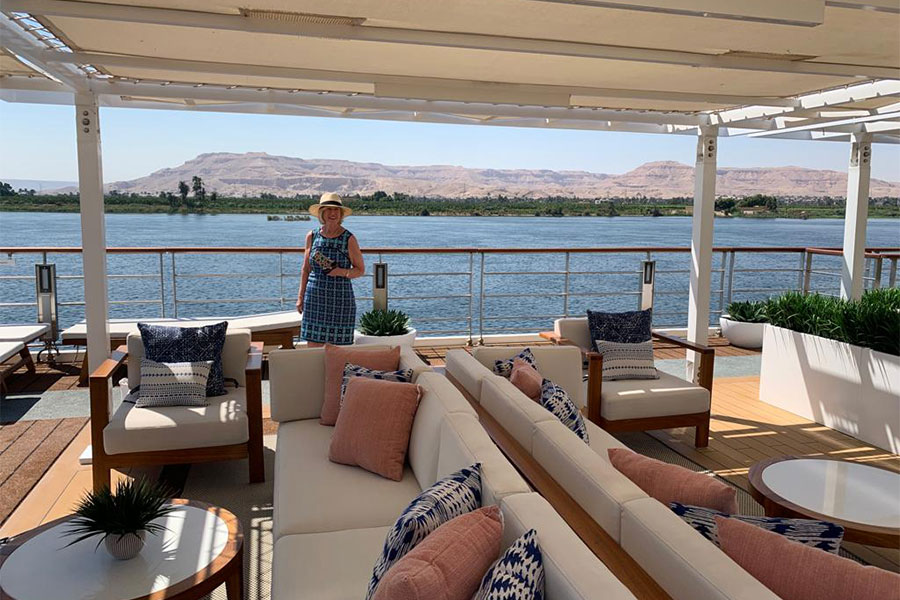
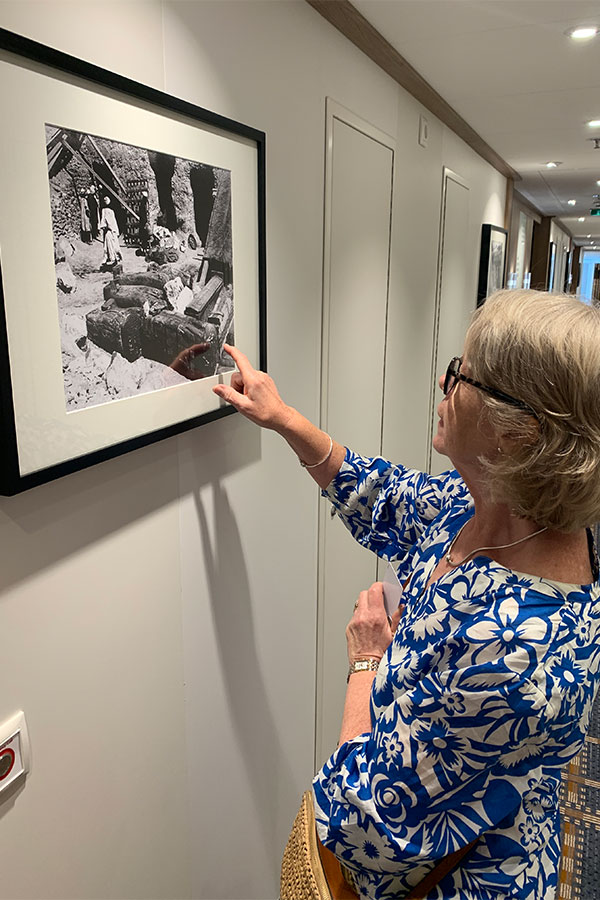
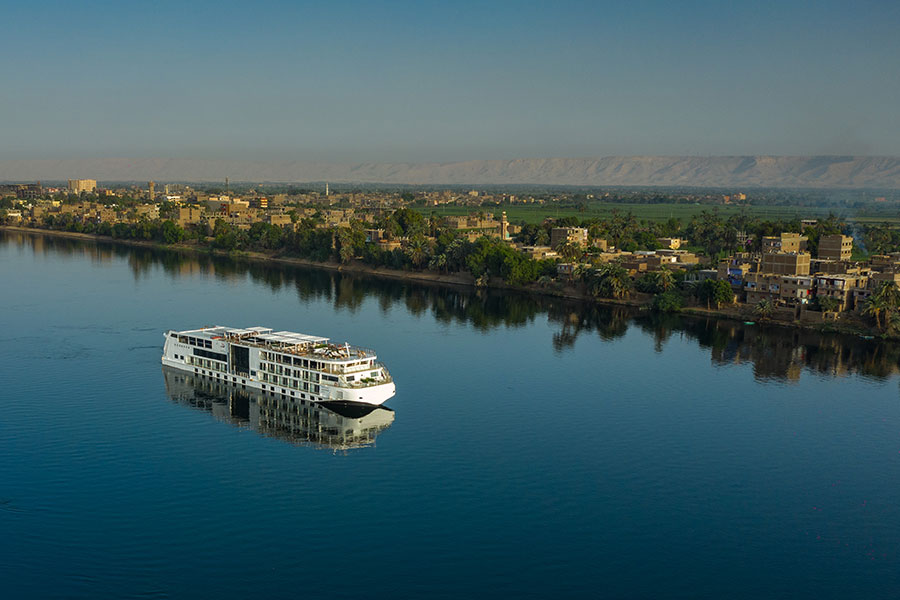
The 80-passenger ship has all the hallmarks of Viking longships ships that sail in Europe but with an extra deck to make up for the shorter length required to navigate the Nile. Light pours in through the glass-roofed three-deck atrium and vast windows in every public space.
A small infinity pool and Aquavit terrace for drinks or light meals add to the pleasure when sailing while the mainly shaded sun deck is a social space with sofas to recline with a sundowner.
Dining echoes all Viking ocean and river ships with a focus on quality and taste and an open kitchen style restaurant. Decent tea and coffee are complimentary and always available from the drinks station.
My cabin has a balcony and two chairs while the inside space is well designed. There are so many drawers and cupboards that I can’t find a thing! Importantly, the air conditioning is efficient.
Understated Scandi styling is complemented with atmospheric black and white photographs dotted along the walls. Taken by the 5th Earl, shots of the sun rising over the Nile, traditional feluccas with their giant sails, village scenes and family groups at the tombs connect the ship to his time in this fascinating country.
Lord and Lady Carnarvon found 160 images at their home and have shared the private collection for guests sailing on board to enjoy.
Viking Osiris is extremely popular so bookings for the 2023-24 season are now open with sister ship Viking Aton joining the fleet next year.
As with all Viking cruises, most tours are complimentary and we take a water taxi from the East to the West Bank to visit the Valley of the Kings. Lord Carnarvon has visited many times but is excited to return, despite sweltering in 42C. A coach takes us on a four-mile drive to the valley and he says: “Can you imagine what it was like for my great-grandfather, riding a donkey from here to the excavation site? He eventually bought a Ford car!”
I can’t imagine, because I am melting in the heat, and agree Carter and Carnarvon’s rule of thumb to excavate only from autumn to spring was a wise move.
As we enter Tutankhamen’s tomb, Lord and Lady Carnarvon point out motifs on the highly decorated walls and share their knowledge and insights with me and fellow guests. It is a surreal moment to stand in the doorway where the first seal of the tomb was broken 100 years ago but I get quite a fright to see, in a glass case, Tutankhamen’s blackened face and feet sticking out from beneath a linen sheet. As they say, I wasn’t expecting that.
There are 63 tombs in the valley, and it’s an unexpected surprise to also visit the tomb of Rameses IX where a dramatic midnight blue ceiling represents heaven’s sky over a stairway to the burial chamber, as well as seeing Rameses III tomb so highly decorated with many snake motifs to protect the king by spitting venom and fire.

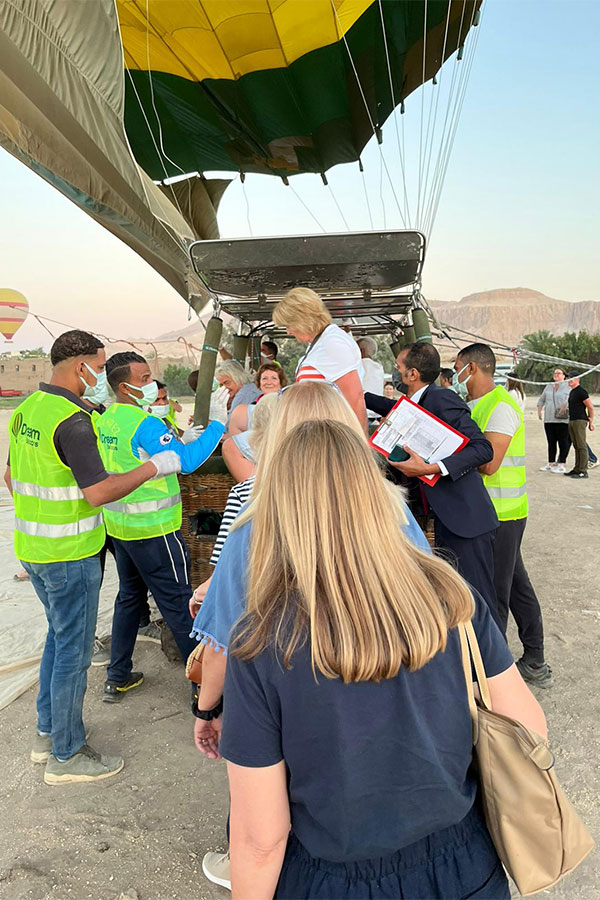
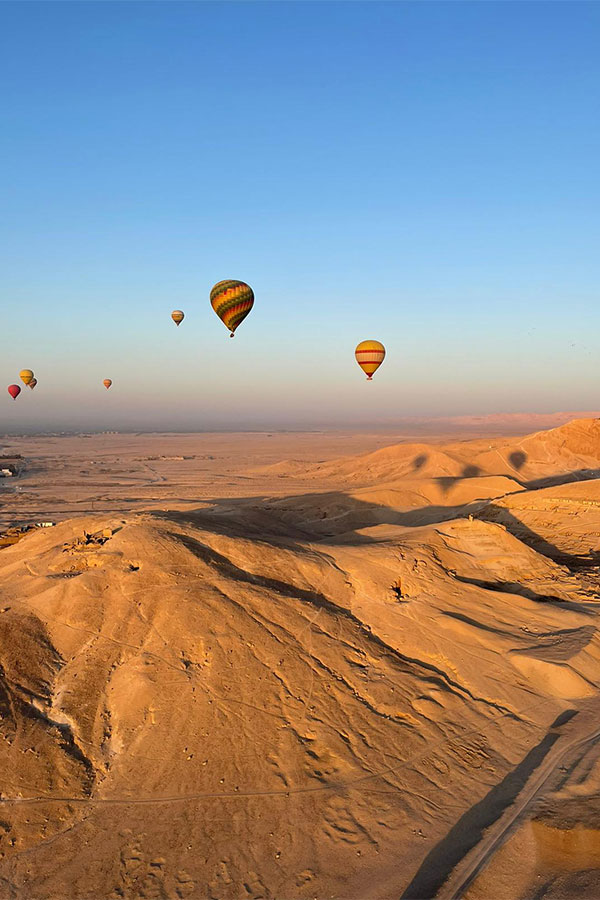
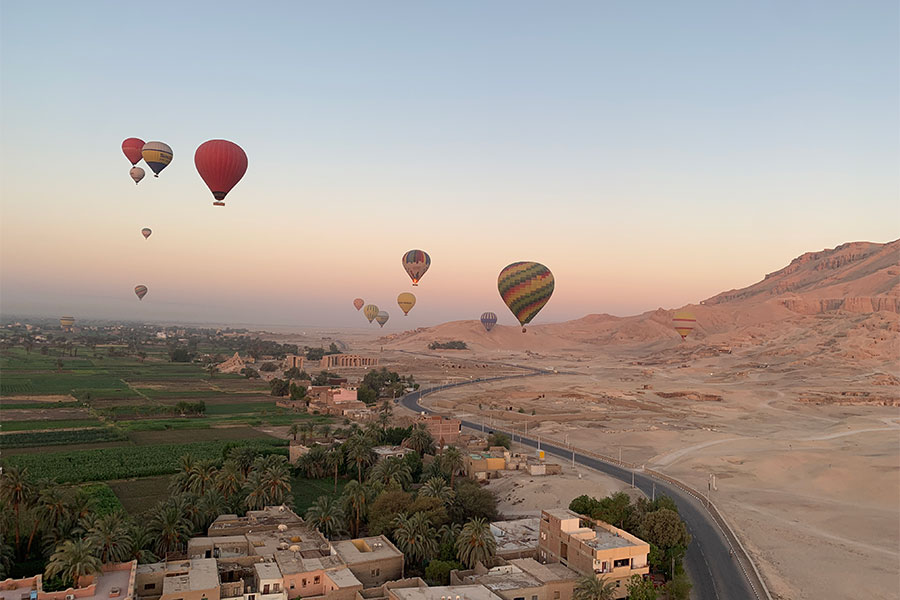
The next morning my alarm goes off at 3am for an optional hot air balloon ride over the Valley of Kings. I am a little nervous but as the sun rises we are among 15 colourful balloons floating up, up and away over the golden sand cliffs of ancient times and look down on the 75ft Colossi of Memmnon statues and Medinet Habu, the Temple of Ramses III, alongside outlines of past and present excavations where archaeologists are still making new finds on a weekly basis.
Each day keeps on giving – the 62-acre Karnak Temple with 134 pillars that defy gravity and the giant Luxor Temple with 2.7km Avenue of the Sphinxes but it is the smaller, Dendera Temple, in Qena, that brings pure delight.

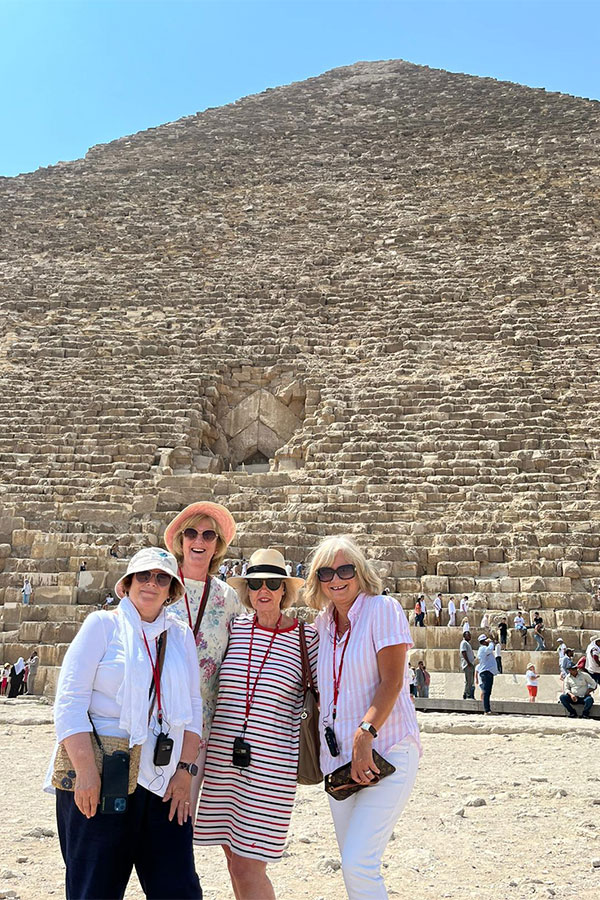
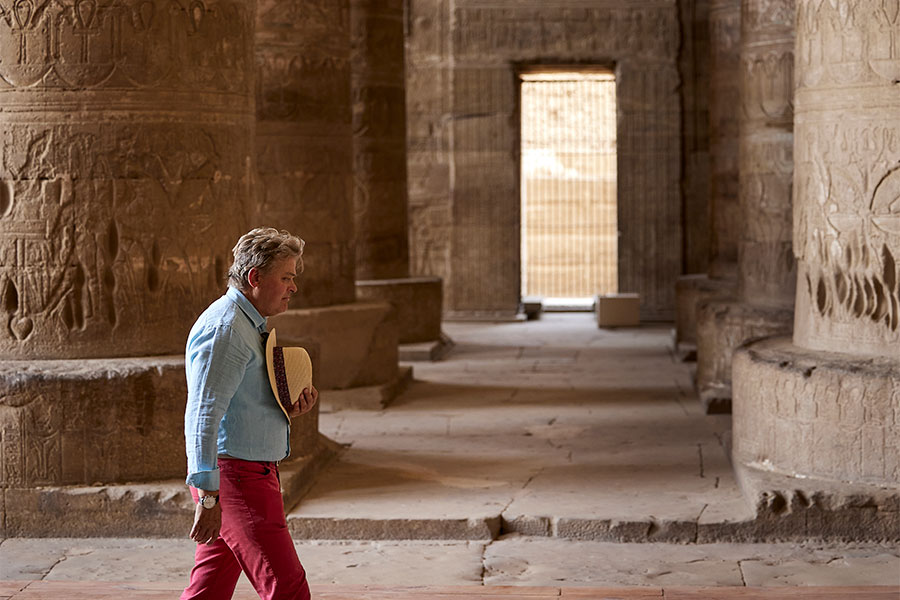
Dedicated to Hathor, the goddess of joy and music, it is one of the best-preserved antiquity sites in Egypt and the only temple with a figure of Queen Cleopatra carved on the walls.
For centuries the interior was covered in black soot from fires, but in the last five years its highly coloured ornate columns and the ceiling have been revealed to show decorations of vultures, winged discs, astrological signs and the union between Hathor and Horus.
Access is limited here, so it’s a privilege to enter, and Lord Carnarvon is clearly blown away by the temple’s beauty: “This is my first visit and I just can’t believe the wonderful, original colours and detail on the ceilings and columns.” I was very interested to see the birth house where statues were carried out of the darkness and into the sunlight to be rejuvenated and, given the lifegiving attribute of the sun. The ancient Egyptians believed that the rays of the sun were lifegiving in life and death.
We are learning all the time on this Nile sailing and as I share on my slightly embarrassing schoolgirl fascination with King Tut, Lord Carnarvon tells me he was also at the 1972 exhibition, once at a private view and, like me, once queuing round the block to get in.
We have seen and experienced so many wonderful things on this cruise; a fitting way to celebrate the 100th anniversary of the most important find in the history of Egyptology.
Next steps
12-day Pharaohs & Pyramids cruise departs January to May and August to December 2023-24 with prices from £4,550 pp including flights; hotel stays; all on board meals including wine, beer and soft drinks with lunch and dinner; included excursions; wifi; tips; evening entertainment; and enrichment talks. Book by December 31st 2022 for £750pp saving and free drinks package. Call 020 8780 7900.


